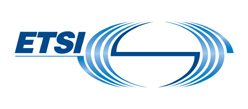ETSI GR MEC 017 V1.1.1 (2018-02)Mobile Edge Computing (MEC); Deployment of Mobile Edge Computing in an NFV environment
The document describes solutions that allow the deployment of MEC in an NFV environment. For each solution, it describes the motivation for the solution, its architectural impacts and the necessary work to enable it. The document provides recommendations as for where the specification work needs to be done.

